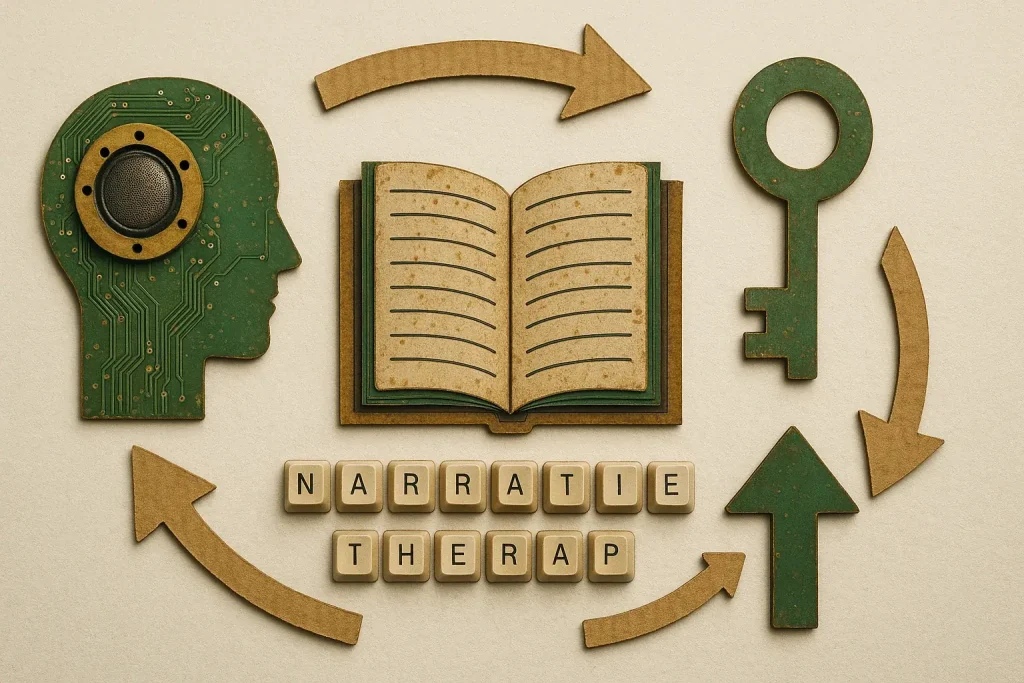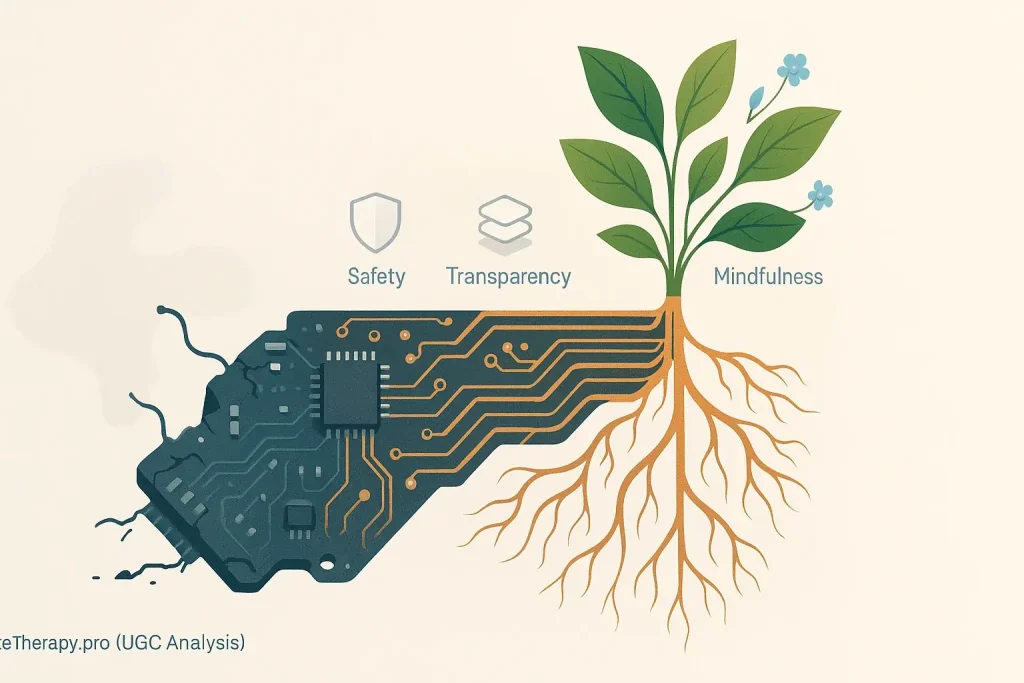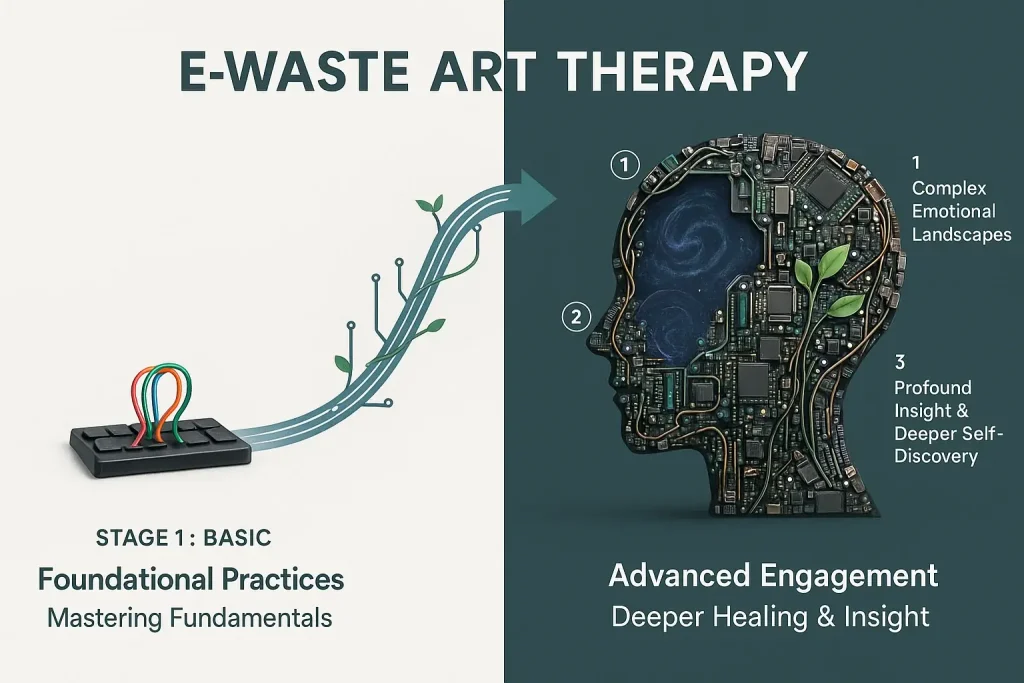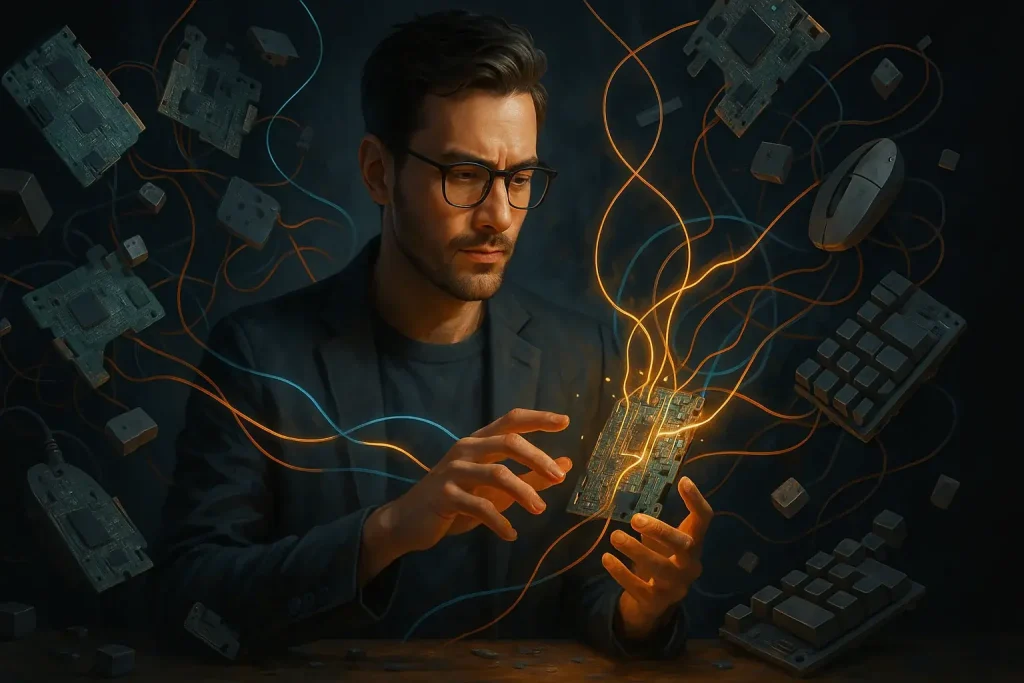What is 'Flow State' in E-Waste Art Therapy?
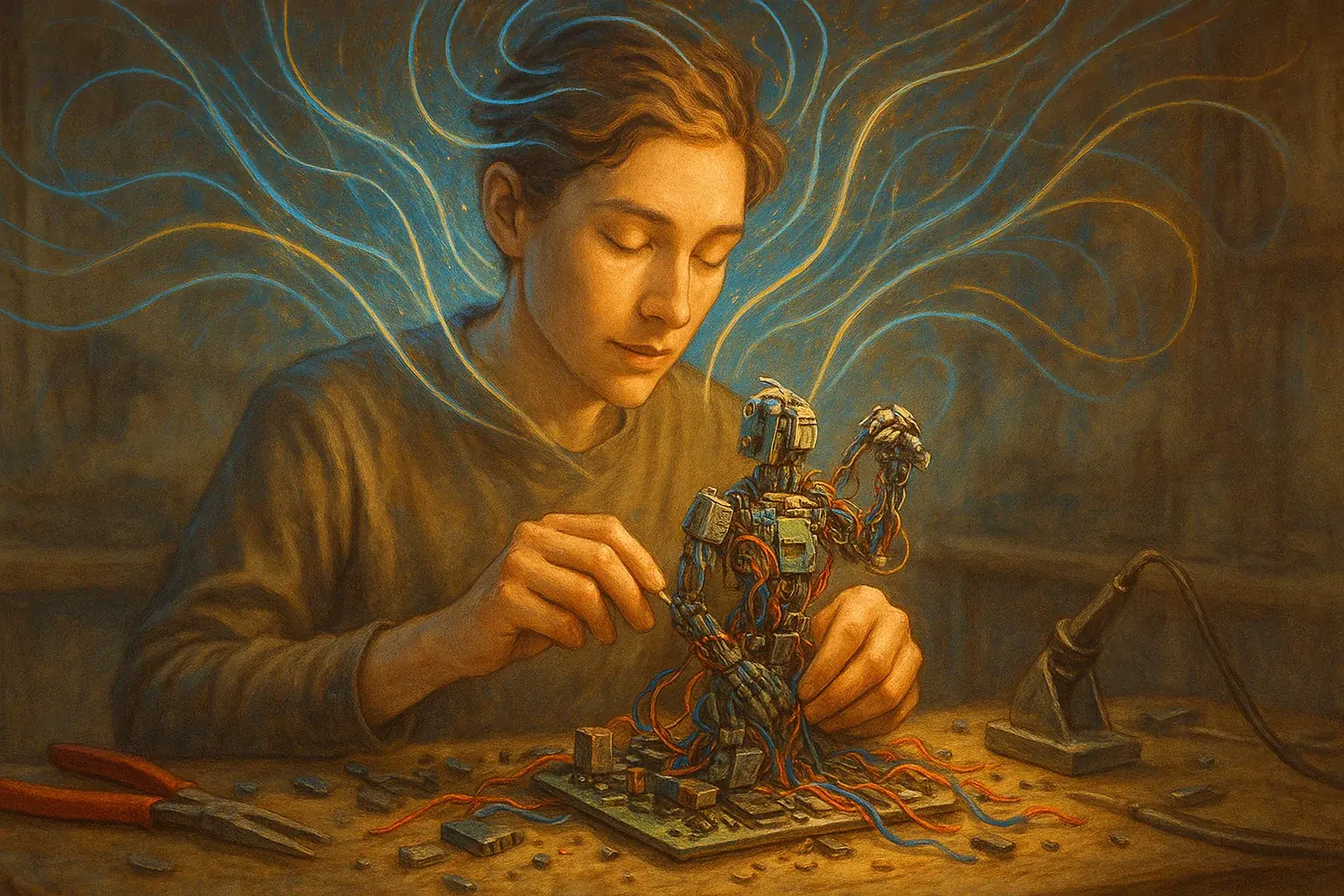
Ever found yourself so deeply engrossed in a creative project that hours just melted away? That powerful feeling is 'flow state'. Our community's experiences highlight this state frequently. Flow defines an optimal experience. Your unique skills perfectly meet the activity's inherent challenge. This delicate balance cultivates deep engagement and profound enjoyment.
E-waste art, our extensive analysis reveals, is exceptionally suited to induce this state of flow. It masterfully blends imaginative expression with very practical problem-solving. This is more than just making something pretty. You are actively figuring out connections between disparate parts. Transforming 'junk' into a meaningful piece presents constant, engaging challenges – these are ideal ingredients for achieving flow. The mind becomes wonderfully focused.
When you enter flow with e-waste art, you are doing more than creating. You engage a deeply therapeutic process. This complete absorption naturally reduces stress levels. Many artists report a significant boost in focus. A strong sense of accomplishment almost always follows. The process itself becomes a healing journey.
The E-Waste Catalyst: Why Discarded Tech Sparks Deep Engagement
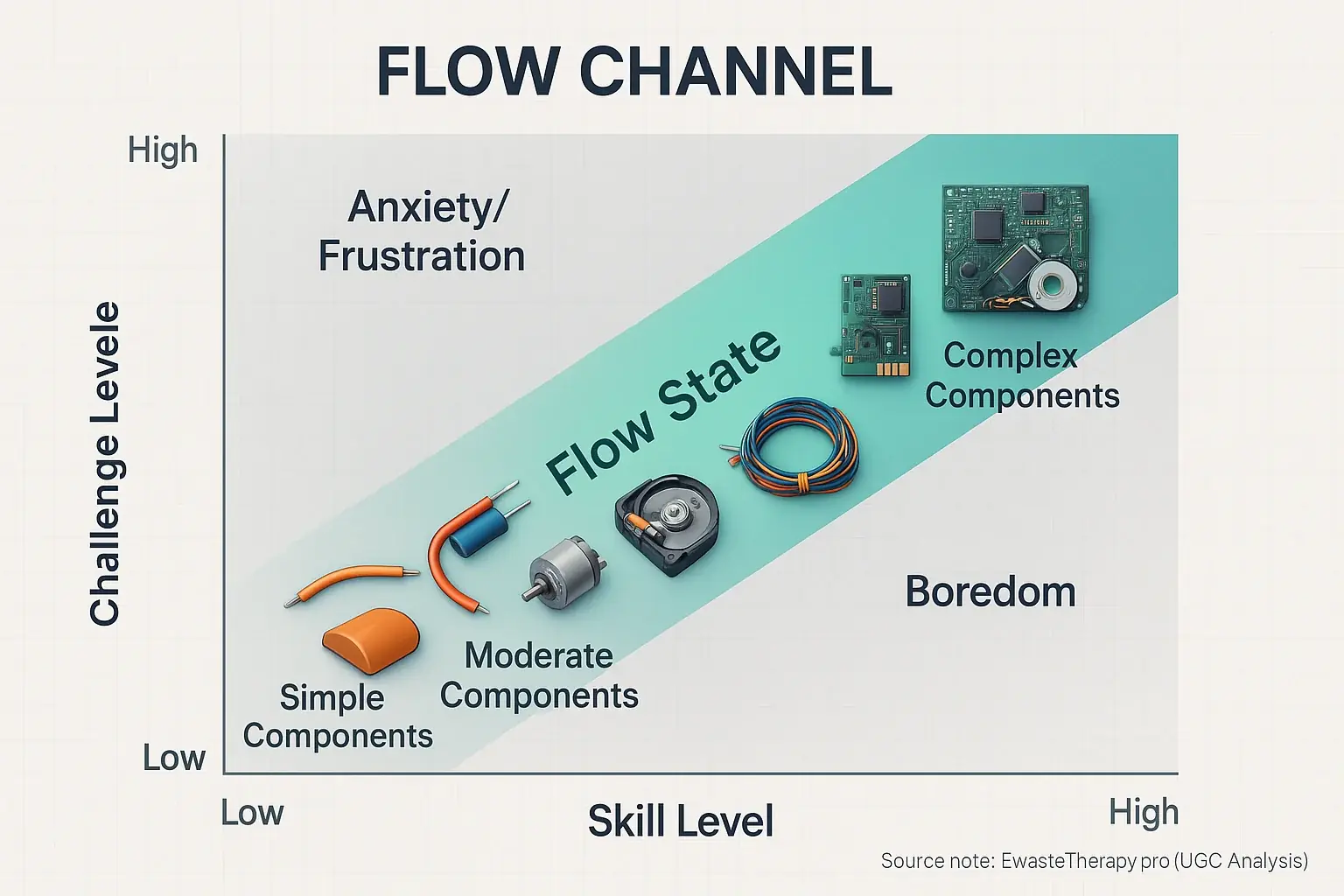
E-waste art begins with unconventional materials. These found objects were never intended for creative expression. This inherent quality presents a distinct challenge. Our analysis of user experiences shows this initial hurdle forces adaptive problem-solving. This problem-solving actively engages the mind. Creators are pushed just enough. They avoid overwhelm. Sustained focus, the precursor to flow, often starts here.
Here’s an overlooked truth from deep dives into user feedback. Many creators find the initial 'puzzle' of a strange component is the real hook. How can that old circuit board become art? What about this tangled wire? It's not merely about making something. It's about uncovering the latent potential within discarded technology. This powerful discovery process acts as an immediate, potent flow trigger.
Successful e-waste art generates quick rewards. Imagine finally connecting two disparate tech pieces. Or transforming a mundane component into something beautiful. Users consistently report a jolt of accomplishment from these small wins. This immediate positive feedback fuels further exploration. This rewarding cycle is crucial. It directly sustains deep engagement and keeps the creative momentum going.
Working with e-waste is a profoundly tactile journey. The varied textures, diverse weights, and unusual forms of components demand your full attention. Cold metal. Smooth plastic. Rough edges. This rich sensory input anchors you firmly in the present moment. Our findings indicate this grounding effect helps quiet mental chatter. Losing oneself in the creative act becomes almost effortless.
Recognizing Your Flow: Signs & Therapeutic Benefits in E-Waste Art
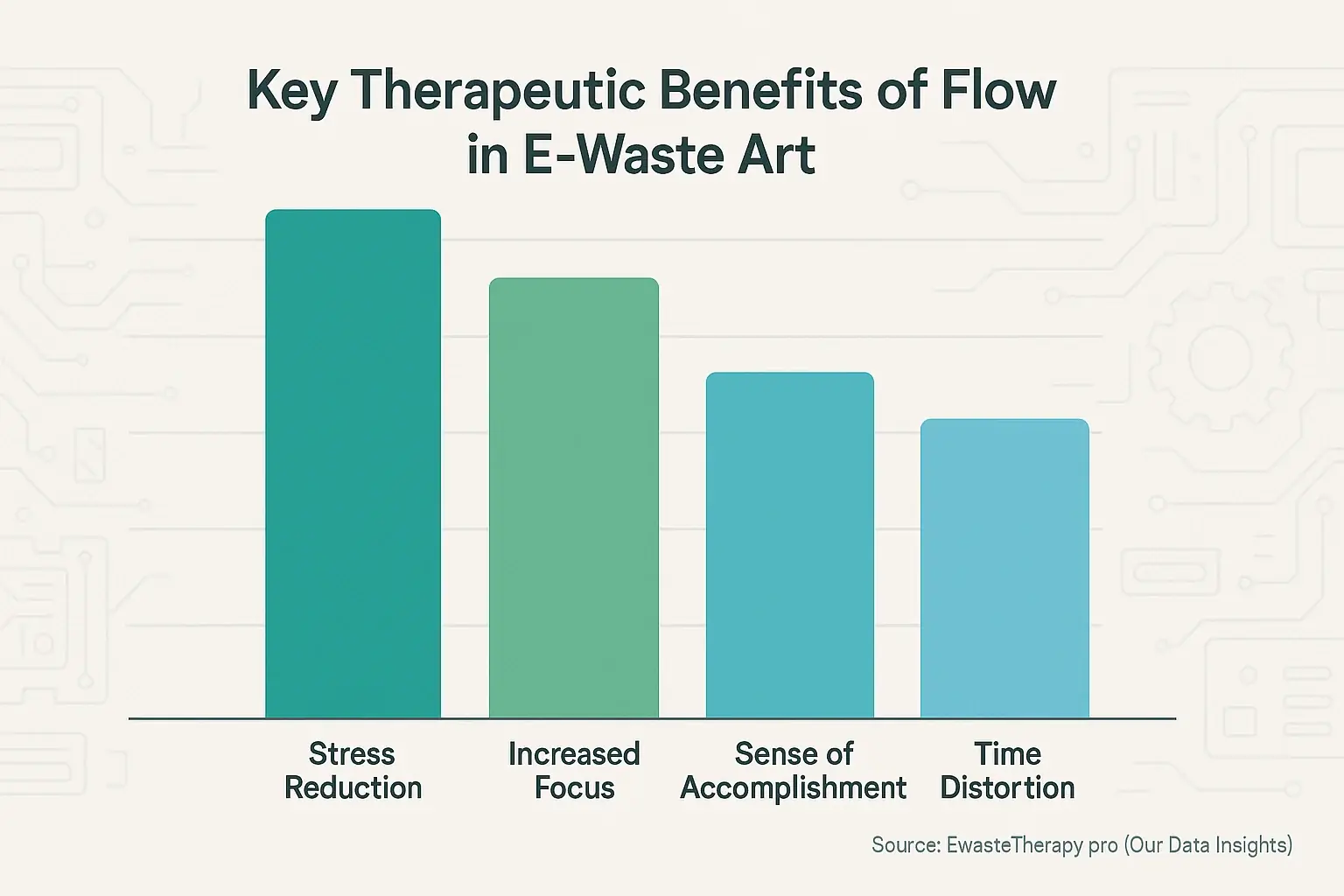
Many creators lose track of time when deeply engaged with e-waste. Suddenly, minutes become hours. You remain completely absorbed in your e-waste art. This time distortion is a primary sign of deep flow. External distractions simply vanish.
Flow brings effortless action. The creative process feels almost automatic with e-waste. Ideas connect seamlessly. Tools become extensions of your hands. Component placement decisions feel intuitive; this clarity reduces mental clutter and self-doubt.
Flow offers profound therapeutic gains beyond immediate enjoyment. It is a powerful stress-buster. E-waste art in flow naturally reduces anxiety. You practice mindfulness without conscious effort. Many users report a significant self-esteem boost, transforming 'junk' into beauty—a direct reflection of their own inner capacity for transformation.
Regularly entering this optimal state cultivates self-efficacy. It also builds resilience. You learn to embrace challenges in your e-waste projects. You discover solutions and trust your creative instincts. These skills positively impact everyday life.
Cultivating Flow: Practical Tips for Your E-Waste Art Practice
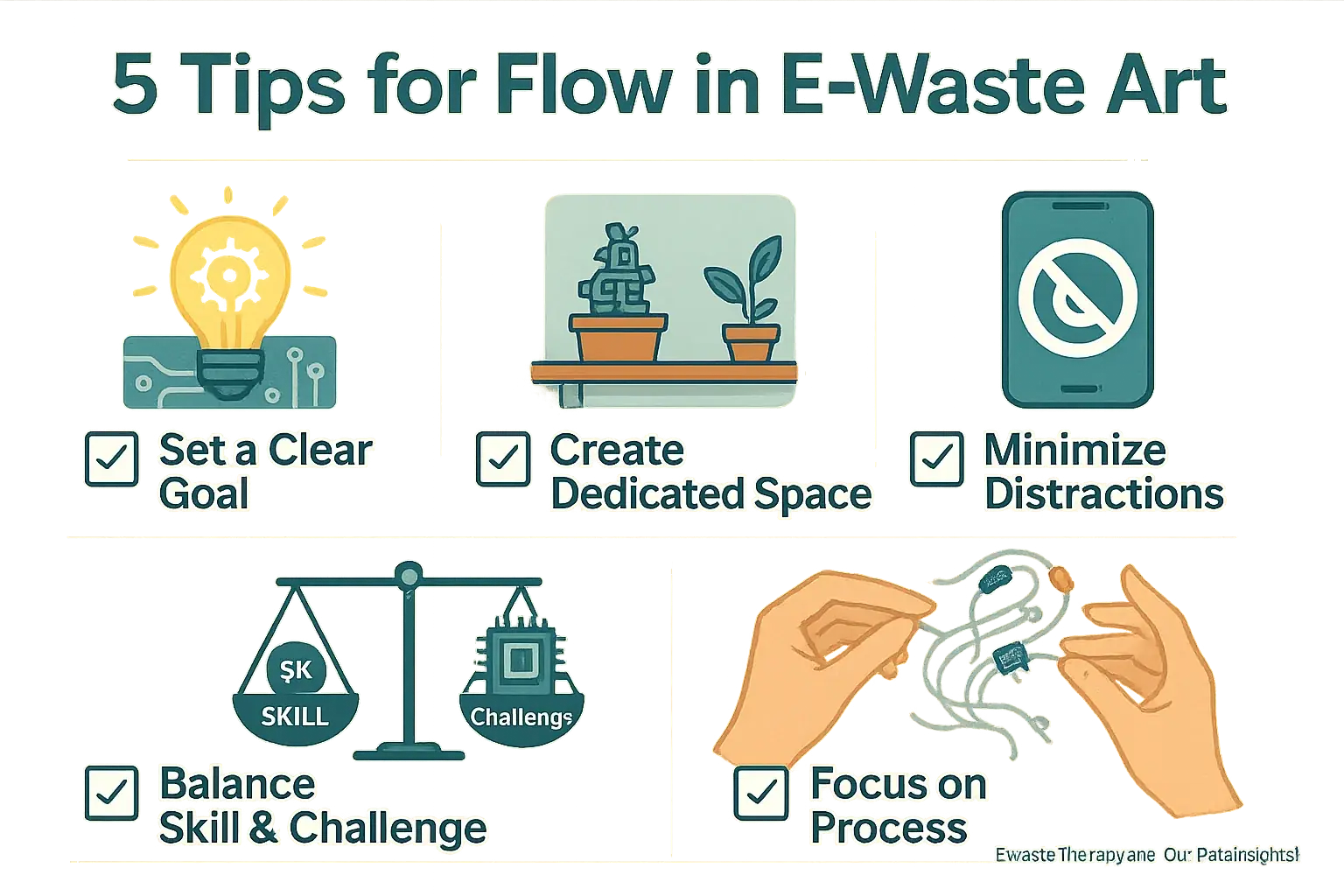
Want to hit that flow state more often? Start by giving your e-waste art project a clear, bite-sized objective. Many artists find 'transform this circuit board into a symbolic landscape' works better than a vague 'make art' goal. This specific focus helps you dive in. Hesitation vanishes.
Your creative sanctuary needs to be, well, a sanctuary. Turn off notifications. Put away your phone. Create a dedicated space for your e-waste art. Users consistently report even small interruptions can shatter that deep, immersive focus. Make it a ritual to disconnect from distractions before you begin.
Flow happens at that sweet spot between skill and challenge. It is not too easy. It is not too hard. If a project feels overwhelming, break it into smaller, manageable steps. If it feels too simple, introduce a new constraint or try working with a more complex e-waste component. Continually adjust this balance. This keeps you perfectly engaged and in the zone.
Here is a subtle trick many discover: embrace the inherent 'imperfection' of e-waste. Do not aim for a flawless, polished piece. Instead, focus intently on the process of transformation. The journey of discovery with these materials matters most. This vital mindset shift removes immense pressure. It frees your mind to truly get lost in the creative making.
